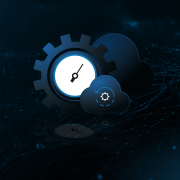
Data migration
All company IT systems sooner or later undergo modernization. Operational systems and data base versions change and business software evolves. Equipment and IT infrastructure are also upgraded from time to time. In connection with all these modifications it is sometimes necessary to perform the migration of resources to new hardware and software environment. However, this operation raises many justified concerns among users.
It is commonly known that data migration consists in transferring collected files from one IT system to the other, or from previous software version to the new one. The transfer of applications and data bases – often “on the go”, while they are in operation – is usually also included under this notion. Fast and efficient data migration from the software previously used in the company makes it possible to maintain business continuity and uninterrupted realization of company goals.
Another reason may be constituted by organizational changes within the company, connected for example with the creation of a branch office, modification of the scope of employees’ responsibilities, employment reduction or increase as well as other internal or external factors, such as changes in legislation. Migration of this kind is often connected with the necessity to prepare new space and workplaces or their physical transfer between different locations as well as their adaptation to new needs.
How to conduct company data migration
Irrespective of data or software type to be migrated, its target location and IT infrastructure as well as migration volume, the process of information transfer should begin with appointing a project manager. Their task is to make sure that migrated resources are properly prepared and marked. Appropriate cohesion policy has to be connected with this process, thanks to which we will avoid the situation when some items are not migrated within the process. Data cohesion policy should also include its categorization, formatting as well as, if necessary, conversion. It is also the occasion to organize the information stored within the company.
Very often during the transfer of company data the “proof-of-concept” attitude is applied, which works well both for limited migration as well as for complex projects. In simple terms, the proof-of-concept attitude consists in verifying the correctness of each process connected with the performed modifications. In this way, while checking scheduled migration processes in the test environment, we protect ourselves against making mistakes during proper resource transfer and eliminate potential threats. The person responsible for migration is also able to divide it into specific stages and pilot as well as monitor the entire process on a regular basis until its completion.
Irrespective of the source and target point, the process should not be conducted hastily, without ensuring the security of data. Each migration, even on a limited scale, is a relatively complex logistics process, in which we are obliged to follow set rules and procedures without exceptions. During its realization we can be supported by backup. It will constitute additional protection.
Backup application helpful during migration
Such backup software as Xopero Cloud, QNAP Appliance or Backup & Restore may turn out to be particularly convenient while transferring resources. First of all, we can use it to prepare backup copy of all migrated data, applications or the entire environment – it does not matter whether migration refers to working stations, physical and virtual servers or data bases.
In this way we can prepare complete recovery environment in case something goes wrong. Backup makes it possible to come back at any moment to the situation before the beginning of data migration through restoring it on previous equipment or software environment. Supporting ourselves with the Xopero application, we can thus stop worrying about the continuity of business processes, in particular in a small or medium-sized company, where migration usually takes as little as a few hours and it is often conducted during night break in the functioning of the enterprise. If we are unable to transfer the files and launch company data base, we can almost immediately come back to the situation right after the last employee left the company.
What is more, when it comes to Xopero QNAP Appliance software, cooperating with NAS servers by QNAP, in which the Virtualization Station function is available, it is possible to create on the NAS server a virtual machine, on which we can restore our backup as well as check all data conversion or migration processes without worrying that they may be mechanically damaged.
Virtualization Stick constitutes an equally useful tool. This Xopero solution makes it possible to create a virtual machine on the computer where the disk does not have any operational system. In this way we can for example check whether on new computers in the company’s new branch office it will be possible to clone backed up working environment with all installed applications and user permissions, without problems with the equipment, e.g. drives. Such trials may be undertaken without physical installation of operational system or the recovery procedure, but with the use of virtual environment. The access via network to virtualized system launched in this way gives us an insight into server resources and services.






